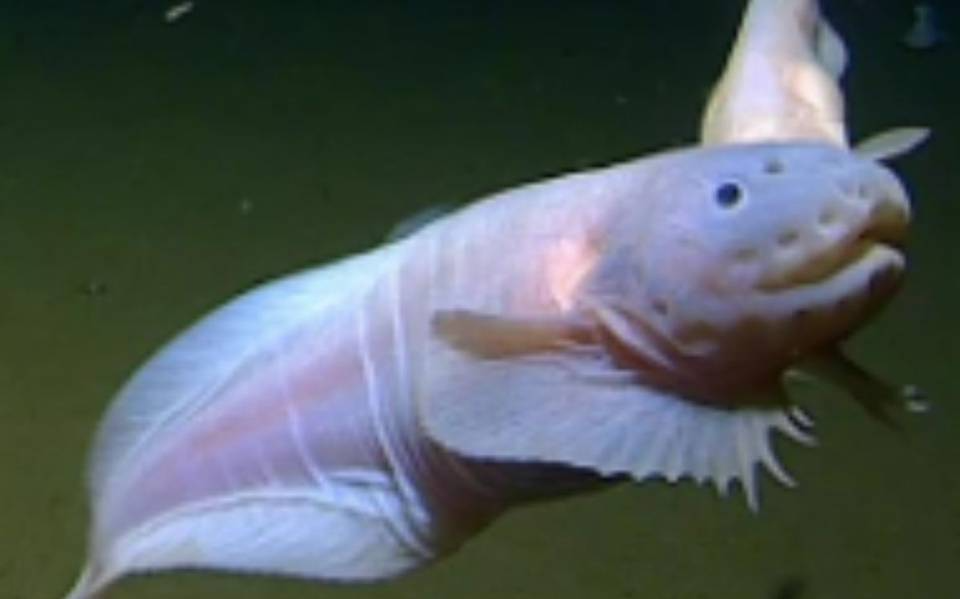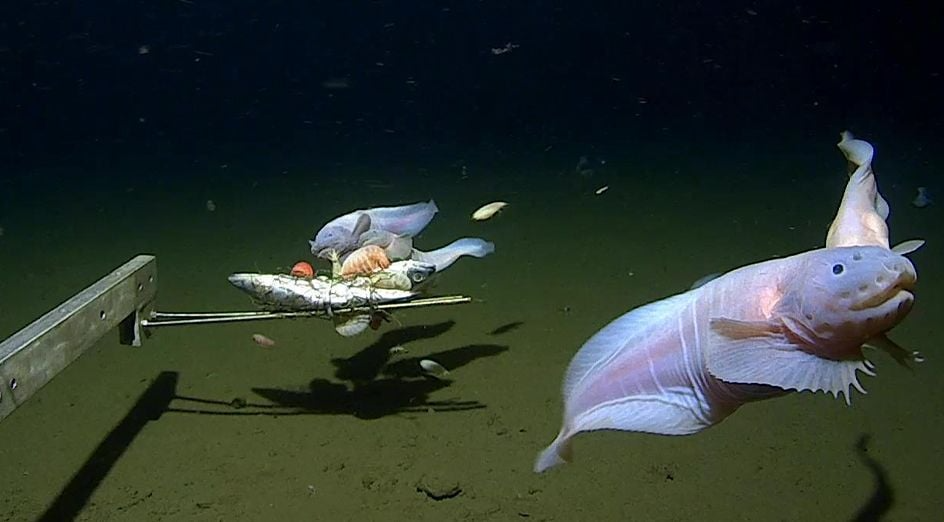In an astonishing discovery, scientists have captured footage of a fish swimming at an unprecedented depth of 8,336 meters in the Izu-Ogasawara Trench, located in the Pacific Ocean.

The species, a Pseudoliparis snailfish, now holds the record for being the deepest fish ever filmed, surpassing previous depth records by a significant margin.
The Discovery: Unveiling a New Depth Record
Over a decade ago, a deep-sea scientist predicted that fish could potentially thrive between 8,200 and 8,400 meters deep.
That prediction has now come true, thanks to the efforts of the Minderoo-UWA Deep Sea Research Centre. Using advanced technology, researchers deployed an autonomous lander in the Izu-Ogasawara Trench, where they successfully recorded a young snailfish swimming at an extraordinary depth.

This trench, located just south of Japan, is one of the world’s deepest ocean regions, plunging to depths exceeding 11,000 meters. The discovery not only sets a new depth record but also expands our understanding of marine life’s adaptability.
Snailfish: Survivors of the Ocean Abyss
Snailfish are remarkable creatures, particularly suited to life in the extreme pressure of deep-sea environments.
More than 300 species of snailfish exist, with some inhabiting shallow waters and others, like the recently filmed Pseudoliparis species, thriving in the world’s most extreme underwater conditions.

Their gelatinous bodies help them withstand the immense pressure at these depths, which can exceed 800 times that of the ocean’s surface.
Unlike most fish, snailfish lack a swim bladder, which allows them to remain neutrally buoyant in such environments, enabling them to survive where few other species can.
A New Understanding of Deep-Sea Life
The team that made this remarkable discovery, led by Professor Alan Jamieson from the Minderoo-UWA Deep Sea Research Centre, worked in collaboration with the Tokyo University of Marine Science and Technology.

They believe the warmer waters in the Izu-Ogasawara Trench compared to other deep-sea environments, like the Mariana Trench, may contribute to the presence of life at such extreme depths.

This discovery reaffirms the rapid advancements being made in the study of the deep sea, a field where knowledge is expanding at an unprecedented rate.
Jamieson emphasizes that while many believe the deep ocean remains largely unknown, this is quickly changing with new technology and exploration efforts.
Conclusion
The discovery of the 8,336-meter-deep snailfish marks a monumental achievement in marine biology, offering new insights into how life adapts to some of the harshest environments on Earth.

This groundbreaking observation not only sets a world record but also opens doors to future exploration of the planet’s least understood regions.








